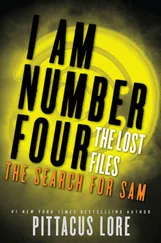Von Daniken noted that in Peru, in the plains of Nazca, there are large drawings on the desert that can properly be seen only from a great altitude. And they depict nothing very extraordinary in themselves: turkeys, condors, and other natural beasts and vegetables. But von Daniken wonders why anyone would construct something that could be seen only from a great altitude, from which he deduces not only that there were beings at a great altitude to see it but that such beings directed the construction, saying, "A little to the left." Now, in American football games, it is customary for people to be outfitted each with a square of cardboard on which is the fragment of a line or a letter. And at the appropriate moment, everybody holds up their piece, and from a great distance some symbol generally having to do with the hope for success of the home team is displayed. And yet no one deduces extraterrestrial intervention in such a case.
Or, von Daniken noted that in the Pacific, on Easter Island, there is a set of massive stone monoliths all facing to the sea, all of which are much too heavy to be lifted by one or two people and all of which, as Jacob Bronowski mentioned, look exactly like Benito Mussolini. They were quarried some substantial distance away on this very small island. And again von Daniken deduces extraterrestrial manufacture from the fact that he cannot himself figure out how people living before the industrial revolution could cut, transport, and erect these monoliths. And yet years before von Daniken wrote, Thor Heyerdahl had gone to Easter Island and with a small team using only the simplest of tools, had transported and erected one of these monoliths that had been found in a supine position. And the erection method included just shoving small bits of dirt and stone under one side of it until it got to the high, steeper angle and then finally stood up.
So there are many other such arguments by von Daniken, most of which have lower plausibility than the arguments I've just presented to you. I've presented some of his best cases. Fundamentally what von Daniken has done is to sell our ancestors short, to assume that people who lived a few thousand years ago or even a few hundred years ago were simply too stupid to figure anything out, certainly to work together for a long period of time to construct something of monumental dimensions. And yet people of a few hundred or a few thousand years ago were no less intelligent than we are, no less able. Perhaps in some ways they were better able to work together. The argument is absurdly specious. So how do we understand that so specious an argument could have been so wildly successful (although today one does not hear much about ancient astronauts)? It's an interesting question.
I think the answer is absolutely clear. The emotional appeal of von Daniken made perfect sense. It was the hope that extraterrestrials would come and save us from ourselves. The hope that if they had intervened many times in human history, surely in the present time, a time of great crisis recognized in the 1960s and '70s and manifestly clear today in an age of fifty-five thousand nuclear weapons, that the extraterrestrials would come and prevent us from doing the worst to ourselves. And in that sense I consider it an extremely dangerous doctrine, because the more likely we are to assume that the solution comes from the outside, the less likely we are to solve our problems ourselves.
But ancient astronauts are only a sideshow, a minor codicil of the principal doctrine along these lines of the twentieth century, and that is flying saucers or unidentified flying objects. And here we have not just the writings of a half dozen people but some collective enterprise involving an enormous number of people all over the world, and something like 1 million separate sightings since 1947, when the term "flying saucer" was first coined.
The standard mythos is quite straightforward. It's that a device of exotic design and manufacture is seen in the sky, at least sometimes doing things that no machine of terrestrial manufacture could do. More rarely, it discharges exotic beings, who engage in conversations with terrestrials, capturing people from the Earth, performing exotic medical examinations on them, taking them to other planets, and occasionally having sexual congress with them, resulting in offspring who are fully human-a feat somewhat less likely, if we bear in mind the clear evidence of Darwinian evolution, than the successful mating between a man and a petunia.
Now, what would we require, if we took even a modestly skeptical approach, to be convinced? We would not require a million cases. I don't think we would require more than one, provided that one case were absolutely solid. We would require that that solid case be simultaneously very reliably reported and very exotic. It is insufficient to have several hundred people see it independently as a light in the sky. A light in the sky can be anything. It has to be much more concrete, much more specific. On the other hand, it is also insufficient to have, let us say, a twenty-meter-diameter, saucer-shaped, metallic object land in a suburban garden on Long Island, a seamless door open (there is some fascination with seamless doors in these stories), a four-meter-high robot walk out, pet the cat, pick a flower, wave to the startled householder, and then disappear back into the seamless door, which closes, and the craft takes off. If only one person saw it, the cat being unavailable for corroboratory testimony, then this likewise is not a compelling case. We would require that the examples be, simultaneously, extremely reliably reported and extremely exotic.
I have spent, although not recently, a great deal of time on UFO cases, feeling that it was my responsibility, since I'm interested in extraterrestrial life, to see if the problem has not been finessed, if the extraterrestrials are not here, in which case, of course, my colleagues and I would be saved a great deal of effort. I spent time on a committee established by the U.S. Air Force to look into this story and have interviewed some of the participants in a few of the most famous cases. And let me give you my overall impressions.
By no means are all UFO cases identified, established as to what they are. Some of them are too sparsely and scantily reported, and a few are sufficiently mysterious, so of course you couldn't expect that to be the case.
But let me give you a sense of routine UFO reports that have been checked out and we do know what they are:
The Moon. You may think that there is no way that someone could identify the Moon as an extraterrestrial spacecraft. But there are many cases where not only has that been done but the Moon has been reported as following and even harassing the observer.
The aurora borealis; bright stars; bright planets, especially under unconventional meteorological conditions; flights of luminescent insects; a low overcast, an automobile going up a hill, the headlights moving rapidly across the overcast; weather balloons.
There was a famous case in which a firefly was trapped between two adjacent panes of glass in an airplane cockpit window and the pilots were radioing about fantastic right-angle turns, defying the laws of inertia, estimated fantastic speeds.
They imagined it at some huge distance away instead of right in front of their noses.
Noctilucent and lenticular clouds, lens-shaped clouds, conventional aircraft with unconventional lighting. Unconventional aircraft.
Then there is a vast category of hoaxes. As soon as you could get your name in the newspaper by reporting a UFO, a lot more people started seeing UFOs than had done so previously. And some of them were done in good fun, some not. A famous case was a set of plastic bags from dry cleaners that were fashioned to form a hood around candles and the whole business sent aloft to make a small hot-air balloon, which can be done. And this very primitive technology was reported by hundreds of people as UFOs and performing maneuvers that, it was claimed, could not possibly have been performed. So there's a hoax plus some misapprehensions or flawed reporting, and the net result is something extraordinarily exotic. But it was only strange moving lights. This is one of the reasons I say that merely moving lights are insufficient.
Читать дальше










